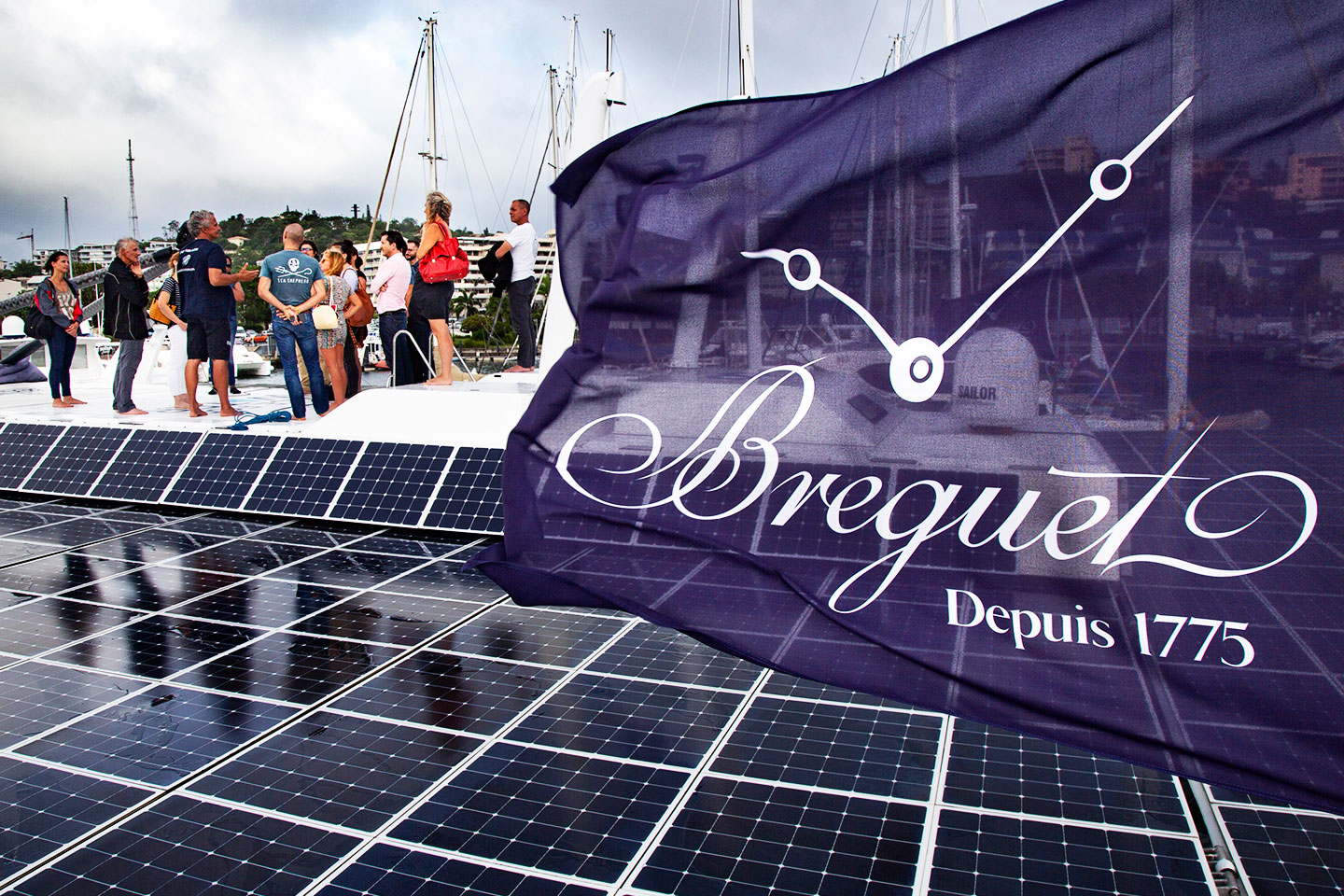Watchmaker Breguet draws attention to the need to conserve the ocean from polluting plastics by backing round-the-world odyssey and outreach programme, Race For Water. Their ambassadress, a cutting-edge catamaran powered by clean renewable energy, is currently in Asian waters, and is Tokyo-bound for the the Summer Olympics.
Would you have guessed that the plastic we see floating on the surface of the seas is just the proverbial tip of the iceberg, forming just 1% of the plastics in our oceans? Or that more than 8 million tonnes of plastic – which comprise 80% of marine waste – pollute our oceans each year? As it is, millions and millions of animals die annually from ingesting or getting entangled in plastic. Left unchecked, our seas – already a swirling soup of micro particles of broken-down plastic – could contain more plastic than fish by 2050.
In a world where celebrity endorsements and ostentatious soirees are the norm rather than exception, watchmaker Breguet, is instead charting a course less sailed – literally – by drawing global attention to a cause that has deep ramifications for the health of our planet. The watchmaker, whose rich heritage has long been tied to the sea, is the main partner for the Race for Water Foundation’s five-year round-the-world odyssey from 2017 to 2021. On its 35 or so stopovers, the team engages with local communities – from school children to decision makers – to highlight the urgency of preventing plastics from entering our waterways, lakes, rivers and oceans. Besides being armed with advanced scientific findings, it also comes with an armada of practical, innovative suggestions and solutions to counter plastic waste.

The ambassadress for the mission is a 100 tonne, 35m catamaran that resembles more of a spacecraft from the future than a seafaring vessel, with her 512m2 of solar panels to harness energy from the sun. She is also equipped with a 40m2 towing kite to harness the wind, and a system from which – in short – hydrogen is derived from seawater, and converted into electricity. It demonstrates that it is possible to circumnavigate the globe not with fossil fuel, but purely on clean renewable energy.
Setting off from from Brittany, France in 2017, the superboat crossed the Atlantic and Pacific Oceans, calling in on various communities between Bermuda and the Solomon Islands, before reaching Asia in mid 2019. This January 2020, the cutting-edge vessel will be making her way from Hong Kong (her 22nd stopover) towards Shanghai. From April to August, she will be docking at five major Japanese cities, including Tokyo in July to coincide with the Summer Olympics.
The cutting-edge vessel has already drawn more than 16,000 visitors – of whom 6,300 are school children – on board, where they learn why it’s so crucial to stop plastics from entering our oceans, lakes and rivers. The stopovers also provide an opportunity for scientists to share – with decision makers – concrete, sustainable solutions and business models that have lasting economic, environmental and social benefits, including providing new sources of income for people most affected by plastic pollution. Solutions include technology to transform waste into clean energy and useful products.
A seafaring tradition with a modern edge
It seems fitting that Breguet, who has built its creations to be passed down from generation, is investing in an initiative at the forefront of modern scientific research to preserve the ocean for our children’s children. Race for Water, founded by Swiss entrepreneur Marco Simeoni in 2010, is dedicated to preserving water and the oceans in particular.
Says Breguet’s President Marc A. Hayek, “In the early 19th century, timekeeping played a pivotal role in maritime navigation. We are continuing that tradition by supporting an Odyssey of vital importance for our common future.”
Sea exploration and science has been at the very heart of Breguet ever since it was appointed the official chronometer-maker to the French Royal Navy in 1815. Royal support enabled the watchmaker to make extraordinary inventions in marine navigation.
Support for the cause also dovetails nicely with the watchmaker’s Marine Collection that reflects a delicate balance between the values of the brand’s heritage and refined yet progressive designs for the modern world.
If you get to meet the Race for Water crew, make it a point to notice on their wrists, a special edition of Breguet’s Marine 5517 timepiece set in a titanium case with a custom blue dial that features the vessel in a clous de Paris motif.

In January 2020, the odssey sails from Hong Kong towards Shanghai. It will subsequently be in Tokyo from July to August for the Summer Olympics. Keep an eye on raceforwater.org for updates as well as any opportunities to visit the boat during her various stopovers along the way.
Images courtesy of Breguet, artwork by Curatedition. All rights reserved.
Related link:
Breguet: A Seafaring Tradition




